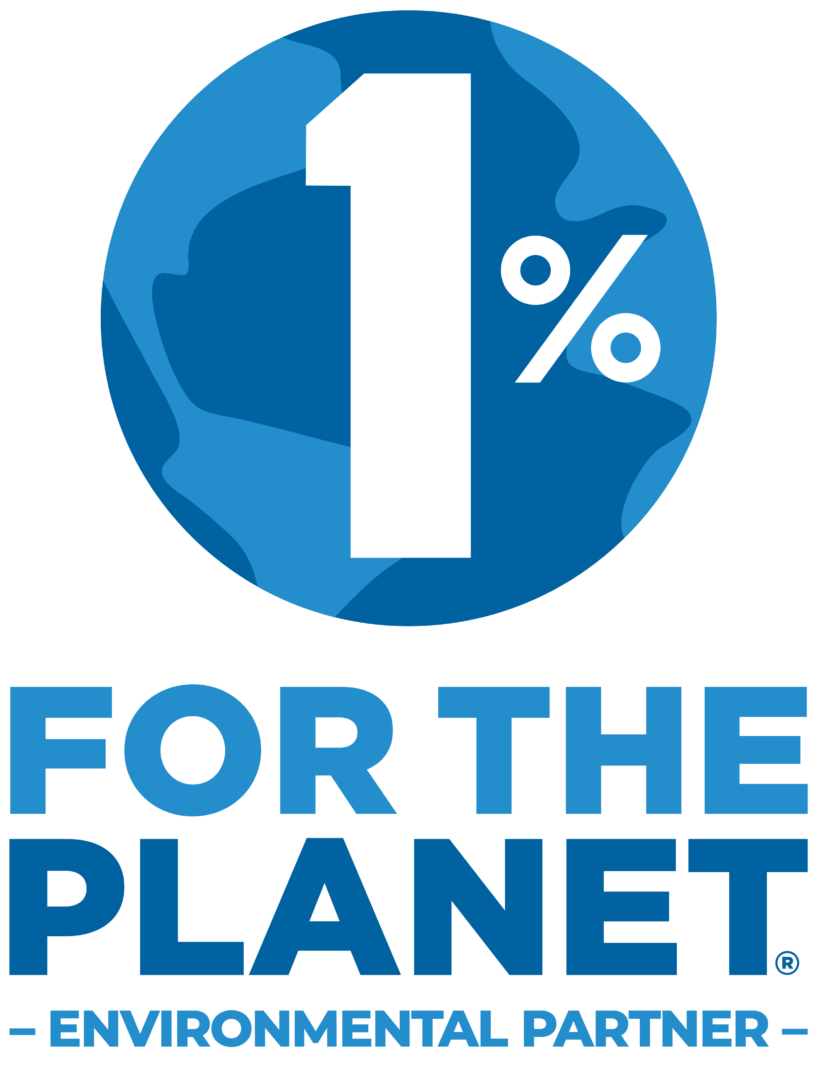Evidently, going green is good for business. Over the past five years, internet searches for sustainable goods have increased by 71%. As global concern heightens with images of Amazonian deforestation, ocean garbage patches, and the lived experience of increasingly erratic weather patterns, consumers are looking for avenues to lessen their role in the environmental devastation we are witnessing. Businesses have responded to consumer concerns in many ways, with companies appearing on the scene that recycle materials, offer refill programs, or publish their material sourcing information publicly. We have also seen a rise in corporations’ nefarious willingness to deceive consumers with unsubstantiated sustainability claims to increase sales and garner public support.
It is a common practice now for fast fashion retailers and fossil fuel companies to market initiatives as “green” and “ethical.” But beyond these industries that likely raise a red flag in our minds when we see them advertising sustainability, it is becoming both more critical and more difficult to determine substantive environmental claims by brands.
Recently, there has been a heightened awareness of false claims for environmental progress by organizations backed by oil and coal, hoping to appease concerns without committing to sustainable climate regulations or environmental efforts. One instance that raised criticism from politicians and the public was a Twitter post by Shell which asked it’s audience in a poll “What are you willing to change to help reduce emissions?” The post was as attempt to come across as a player in climate activism, but was met with suspicion as Shell is a major oil and gas producer.
But not all greenwashing claims are as easy to detect. An episode of The New York Times’ podcast The Daily aired a misleading ad by ExxonMobil about carbon capture efforts, despite their claim to subject ads for fact-check and not promote misinformation. Exxon’s ad was an example of “paltering,” or misrepresenting the company’s climate efforts by stringing together sentences not entirely untrue but entirely reliant on the listener not having enough expertise on a complex issue to realize the deception. Research into how this ad could have gotten by any filter of “fact-checking” revealed that advertising standards for The New York Times are interested in the intent of the ad rather than its impact. For a reach of nearly 2 million weekly listeners to the podcast, the impact seems to demand higher priority. This ad aired on the heels of Exxon’s PR company, Edelman, receiving public pressure from celebrities, the fashion industry, and activists alike to drop their affiliation with the fossil fuel company.
To put the magnitude of this in perspective, the five biggest oil companies (Exxon, BP, Chevron, Shell, and ConocoPhillips) have spent over $3.6 billion collectively in the past thirty years on reputation-building climate advertising. After the 2010 Deepwater Horizon oil spill in the Gulf of Mexico, BP’s ad promotion spending jumped from $10,000 to $168 million. This is problematic because it reveals the willingness of big corporations to lie to audiences with polished marketing that plays to our environmental concerns while covering up harmful activities going on not too far behind the scenes. Activist Greta Thunberg advised her Twitter followers to be wary of greenwashing by anyone represented at the conference “framing the outcome as ‘good,’ ‘progress,’ ‘hopeful’ or ‘a step in the right direction.’”
In this article, we detail the ploy of “greenwashing,” a marketing tactic to convince consumers that a product, service, or company is environmentally conscious.
One study found that 64% of American consumers are willing to pay more for sustainable products, but 74% of them do not know how to identify those products. Greenwashing capitalizes on assuaging good intentions with strategic use of design, buzzwords, and campaigns that offer vague promises or cloak business interest in environmental concern. Unfortunately, this kind of marketing both harms consumer trust and makes it more difficult to determine businesses whose efforts are more meaningful. Ultimately, consuming and purchasing goods will almost always be complicated and rarely perfect, but there are some key things to look for so we can use our purchasing power to lessen our impact on the planet and support businesses that align with our values.
When investigating green marketing claims, here are some things to look for:
How to Avoid Greenwashing: #1: Lack of Real Transparency
If a company is making a conscious effort to implement environmental activism into their business strategy, they have every reason to tell you about it. Furthermore, the FTC’s Green Guides require businesses to provide proof if it claims its product to be compostable, degradable, free-of, non-toxic, or recyclable. Try to go beyond buzzwords. On company websites, look for a page where they back up their claims. Whenever you see terms such as “footprint,” “annual report,” “impact assessment,” or “sustainability report,” look for numbers. What data does the company provide to prove their claims? How is it framed? If you’re on a website such as Keurig or Nespresso, they will never admit that their business model based around single use coffee pods is simply not the most sustainable option. Greenwashed marketing hopes to make the consumer feel better about a purchase so they won’t consider buying something different altogether. If you’re interested in investigating a specific company’s bold sustainability claims, there are a number of blogs and Youtube channels-- including Grow Ensemble, Imperfect Idealist, and Futureproof-- that do deep dives into their legitimacy.

Greenwashing and how to avoid it. (Photo Credit: Twomeows/getty images via Good Housekeeping)
How to Avoid Greenwashing: #2 Check Questionable Certifications
One convenient way to scan a product for its environmental impact is identifying its certifications. Not all certifications were created equal though, some needing only to see a credit card number before granting a product their seal of environmental approval. Some certifications, like Certified B Corp or LEED, require renewals for the certification which keeps the company accountable to upholding sustainability commitments. Some examples of certifications to look for that have a thorough vetting process are:
- Leaping Bunny, cruelty-free beauty and cosmetics
- Guaranteed Fair Trade, the highest level of membership in the Fair Trade certification which robustly evaluates an organization or product for all 10 fair trade values
- Cradle to Cradle, focuses on the safety and circularity of design and manufacturing using sustainable materials
- 1% for the Planet, connects a broad range of companies and individuals with approved environmental nonprofits to donate 1% of their sales
Additionally, there are apps like Ethical Consumer and Good On You that evaluate the sustainability efforts of brands before you shop.
How to Avoid Greenwashing: #3: Watch for Deceptive Language and Design
Is the language describing the product nonspecific? One example of a vague term that is often deceiving is “natural.” Arsenic is natural, so is mercury. There’s a trend in the beauty industry towards all-natural ingredient lists, but sometimes this comes at the expense of disrupting ecosystems with unsustainable harvesting. Prickly pear, Madagascar vanilla, and other unique flora are key to helping clean beauty products deliver on the expectation of luxury.
Sleek minimalist packaging, the color green, and patterns mimicking wood, cardboard, or leaves are other ways that a company can subliminally advertise to the consumer that their product is concerned with the environment without making any commitments. It’s also valuable to note that certain words including “eco-conscious,” “biodegradable,” and “renewable” are not regulated by an agency and therefore not entirely trustworthy without proof. Additionally, be wary of scarcity marketing, or any language that plays on the consumer’s desire to not miss out on an opportunity. What is the attitude behind the products? Is the advertising creating a sense of dissatisfaction or inadequacy? A product can be sustainably made while also remaining connected to the unsustainable root problem of consumerism.
How to Avoid Greenwashing: #4: Identify the source
Is the product coming from halfway across the world? The environmental expense of shipping might not be worth the investment in a more “sustainable” product. Consider looking for an alternative produced closer to home. Big box stores are affordable up front but often come with a hidden price: IKEA actually exceeds Amazon in the amount of carbon it produces in shipping its products. Like all other circumstances, when it comes to consumerism, there will always be a balance of cost and benefit. Do your own evaluation; depending on how much car-commuting it will cut down on, your e-bike from China might be worth the manufacturing and shipping carbon cost.
How to Avoid Greenwashing: #5: Verify the Data
Look for numbers that prove that the marketing claims are actually being accomplished in the way they are promised to. Some great examples of data transparency can be found on tentree’s website. They have also just launched a platform called veritree, a reforestation tracker to help businesses measure and visualize their environmental efforts. How much water was saved in comparison to other similar products? How much carbon was emitted in its production or shipping? What is their strategy to reduce carbon emissions? Investigate how they arrived at these numbers. While statistics provide a degree of objectivity, also keep in mind that the choice of what data gets shared or measured and what data doesn’t is a choice-- one that can sometimes impact the way claims are perceived. If a business is providing enough specific details that their audience can hold them accountable to deliver on, then you can likely trust their commitment to what they claim to care about.
How to Avoid Greenwashing: #6: Are They Campaigning?
A sudden, ambitious push towards green efforts by a company shortly after ethical or environmental missteps is increasingly common. Of course, honest efforts to fix what’s wrong are merit-worthy. But these campaigns so easily implode when problematic companies overpromise and underdeliver. H&M’s “Conscious Collection” landed in 2014, claiming to correct past wrongs in their supply chain, however an investigation by the Changing Markets foundation revealed that 96% of their eco-claims do not deliver on what they promise. Currently under H&M’s “Garment Collecting” campaign, they are advertising to “close the loop” by offering customers a coupon voucher to use in their stores for every bag of unwanted clothing they bring in. First, let’s acknowledge the sheer irony of this claim by one of the biggest fast fashion offenders, producing 3 billion items of clothing every year and burning metric tons of garments that never make it to the shelves through a Swedish power plant. Second, their incentive for this program? To spend more money in their store.
This kind of greenwashing provides a path of least resistance for consumers to continue supporting what they are familiar with, at very low cost to them and at high cost to the integrity of circular programs and durably made products intended to last longer than one season.
Which brings up an important consideration: sometimes, the long-term tenure of an item does more good than something sustainably certified that only gets a couple years of use. Finding ways to extend the lifespan of items you already own, or purchasing something that will hold up well for the long run is a conscious consumer habit that tends to be a bit more “greenwashing proof.”
How to Avoid Greenwashing: #7: Find Alternatives
Is the product single use? Made of plastic? Will you need to replace it by this time next year? Why not look around for an alternative to buying a new physical item. Is there an option to purchase second-hand, to share or borrow the item with a friend, or to mend what you currently own? Remember that the most sustainable option is simply buying less.
The goal with conscious consumption is not perfection. A little bit of good is better than none at all, and the way we spend our money influences the kinds of products and business practices we will see more of down the road. With so many options on the market by businesses that are making a real difference, we hope that this resource empowers you with discernment to make beneficial long-term decisions with your purchasing power.
Plant With Purpose is a leading Christian Environmental organization reversing poverty and environmental damage around the world through reforestation, regenerative farming and economic empowerment of rural communities.

















